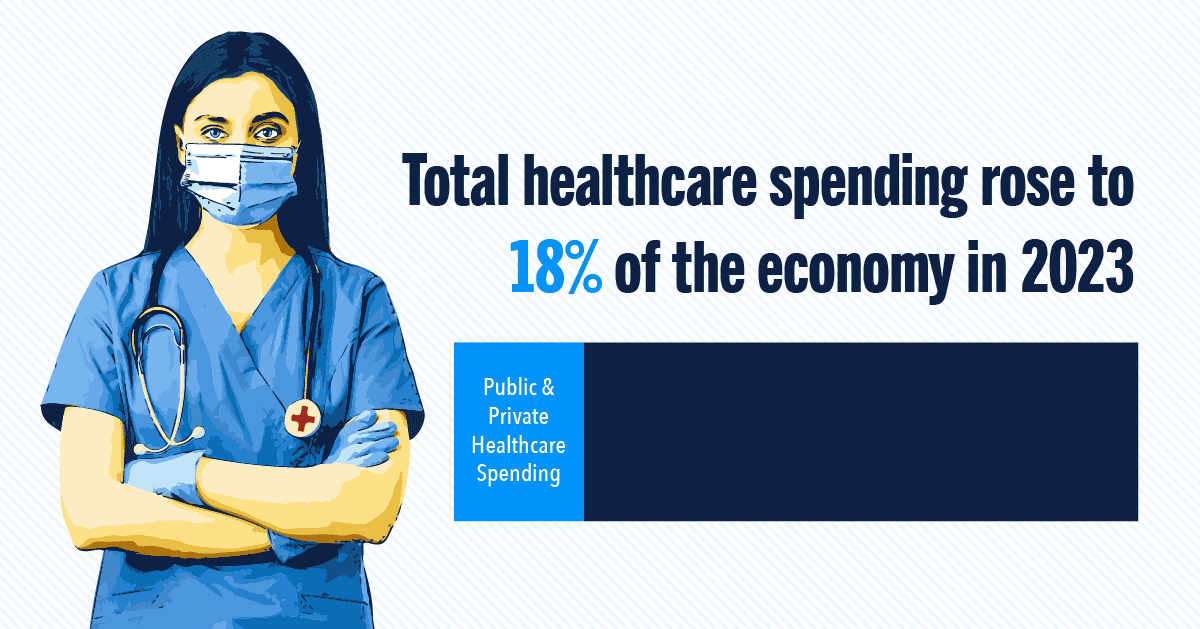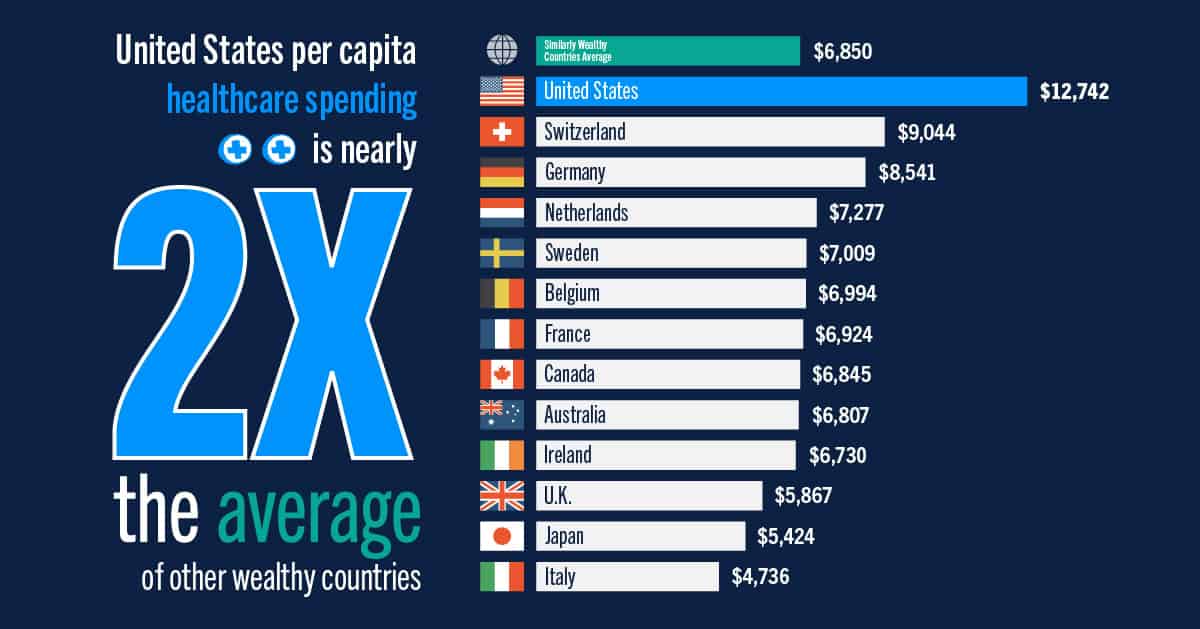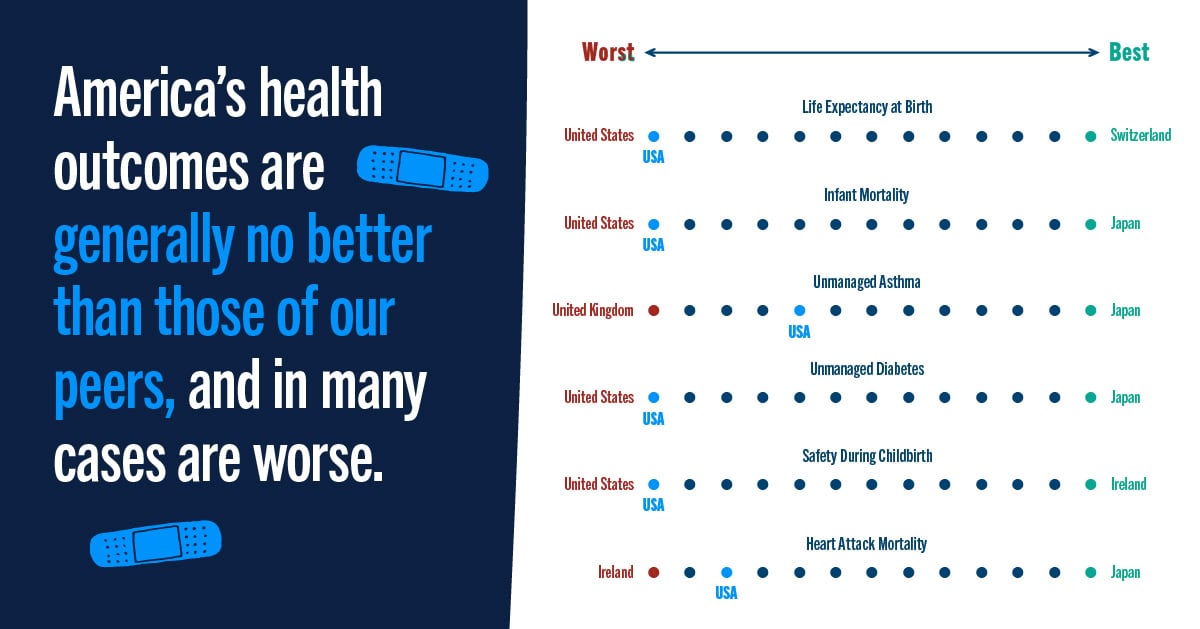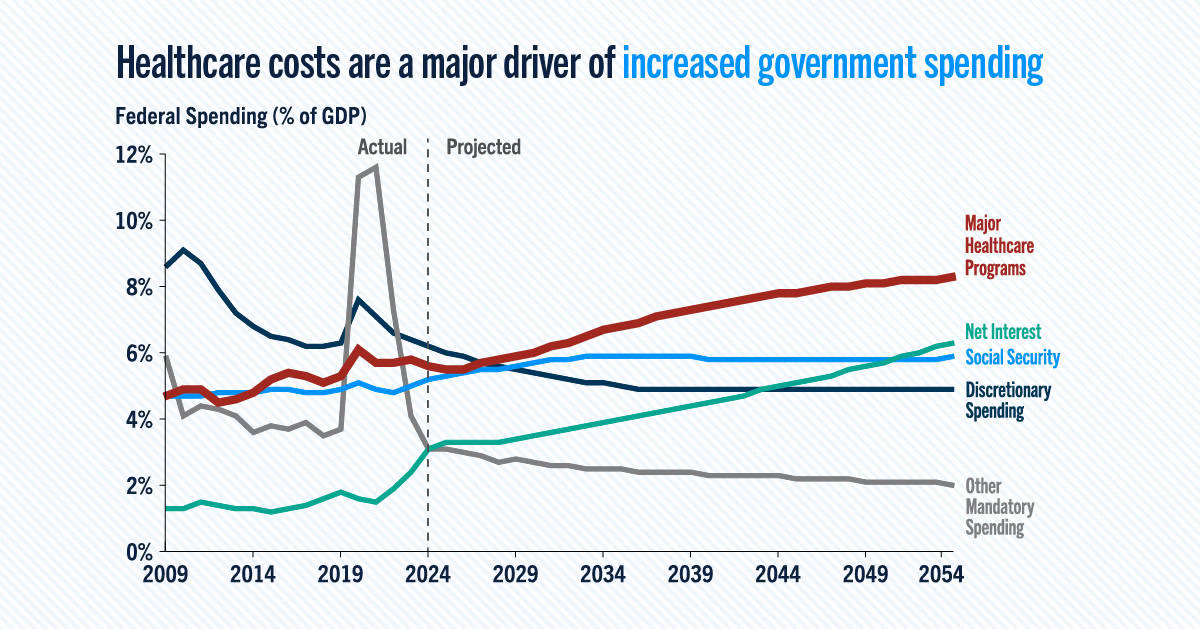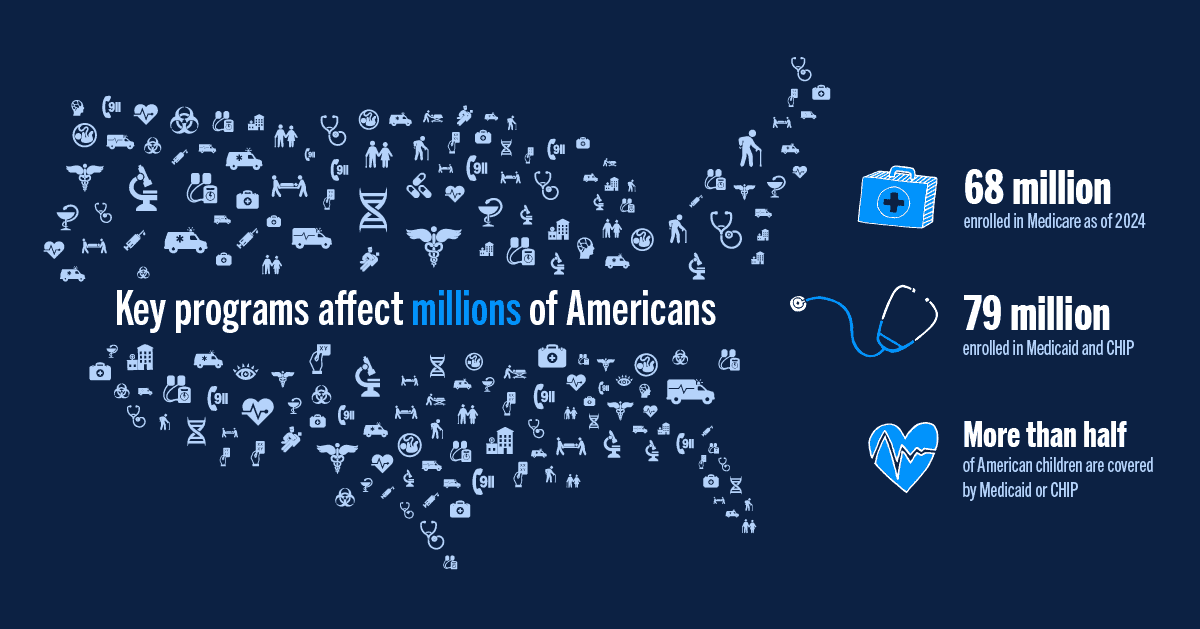Improving our healthcare system to deliver better quality care at lower cost is critically important to our nation’s long-term economic and fiscal well-being.
The rising cost of healthcare is one of the key drivers of our growing national debt, which crowds out important investments in our future economy, including priority areas like education, research and development, and infrastructure.
Although the United States spends significantly more per person on healthcare than other industrialized nations, our health outcomes are no better — and are often worse.
As lawmakers consider changes to healthcare reform, the infographic below highlights some key facts about the American healthcare system. To learn more about possible policy options, see our discussion of healthcare solutions or visit the Peterson Center on Healthcare.

Feel free to share this infographic on Twitter.
Further Reading
Healthcare Costs Are a Major Driver of the National Debt and Here’s the Biggest Reason Why
One of the largest drivers of that rising debt is federal spending on major healthcare programs, such as Medicare and Medicaid.
U.S. Healthcare System Ranks Seventh Worldwide — Innovative but Fiscally Unsustainable
Spending on healthcare in the United States has far outpaced other major healthcare systems without yielding better outcomes.
Medicare’s Hospital Insurance Trust Fund Could Be Exhausted In 8 Years
Without reform, Medicare spending will continue to rise over the coming years — threatening the HI Trust Fund and placing immense pressure on the federal budget.
